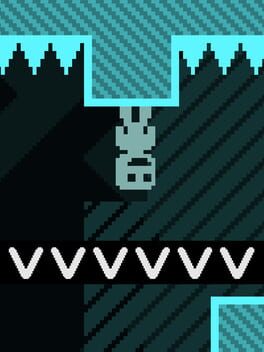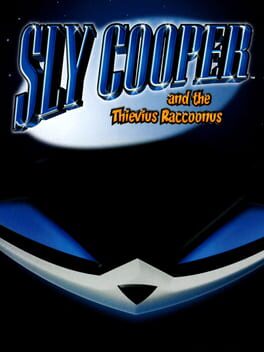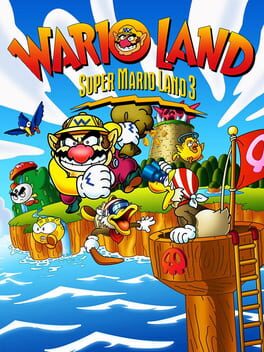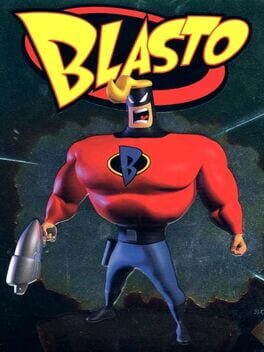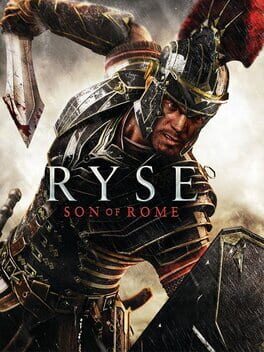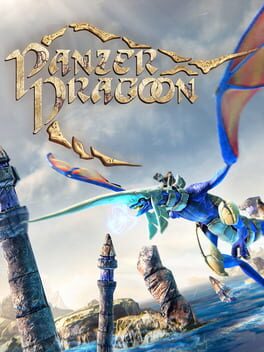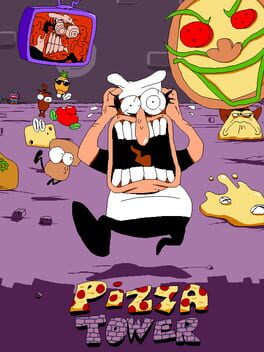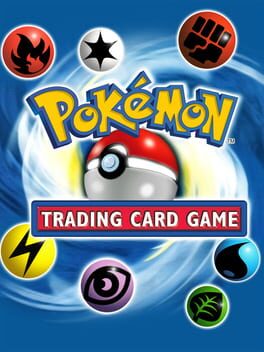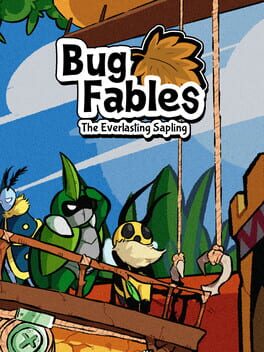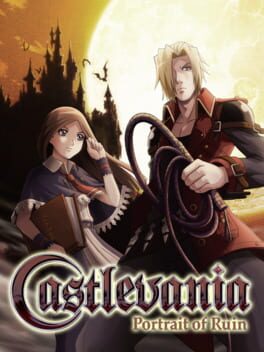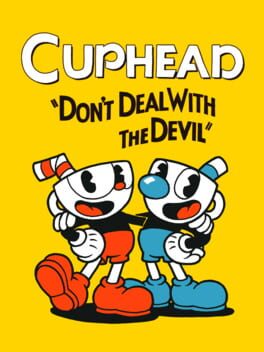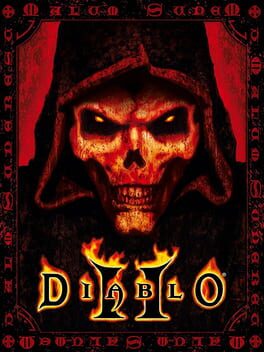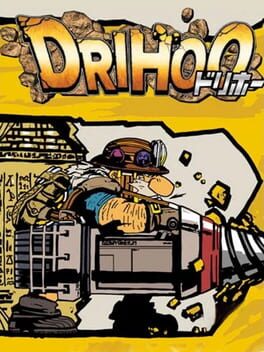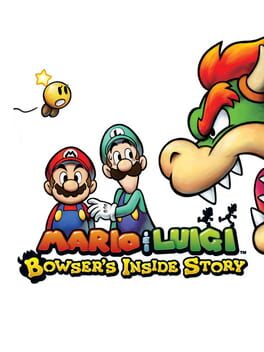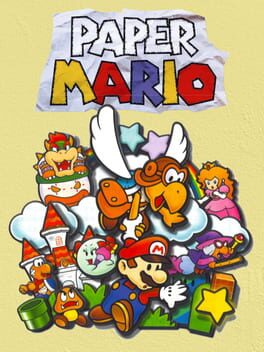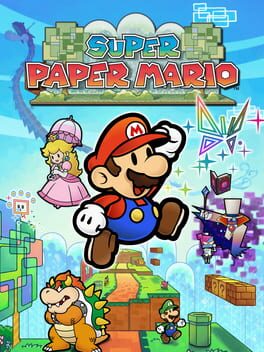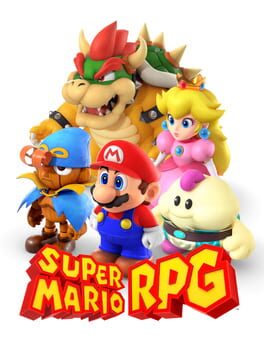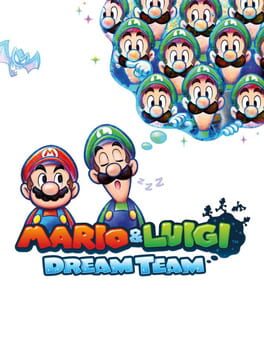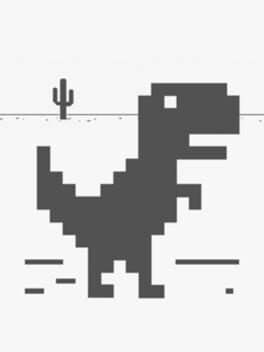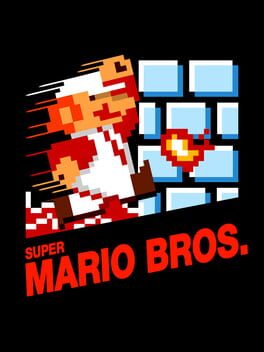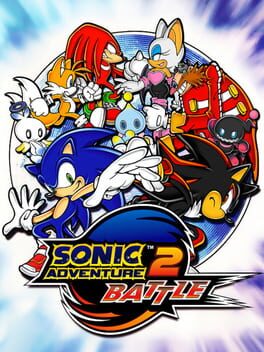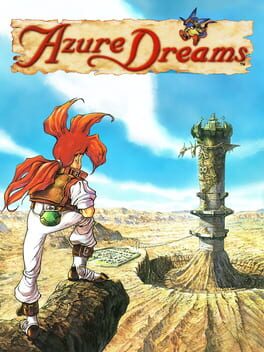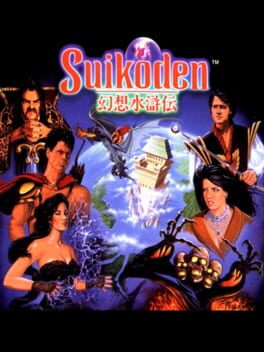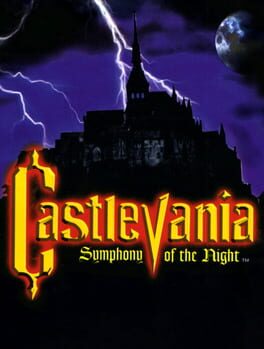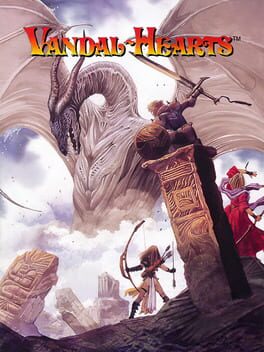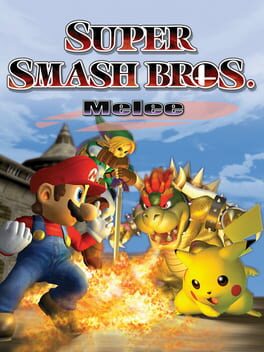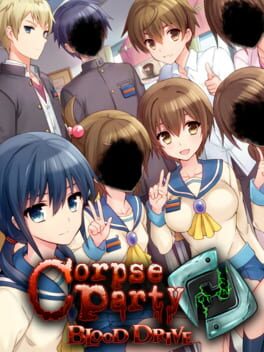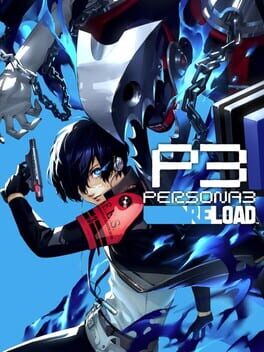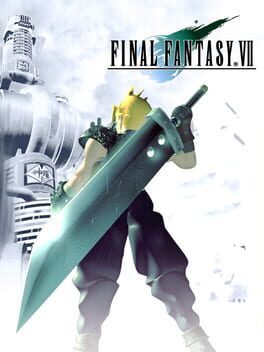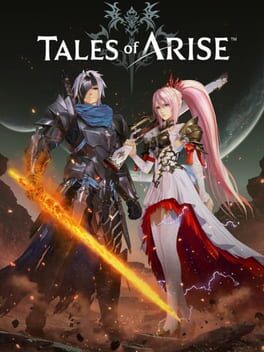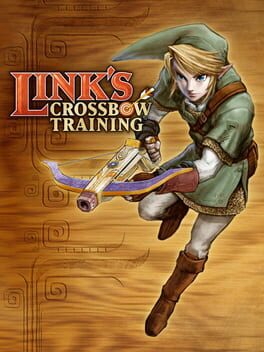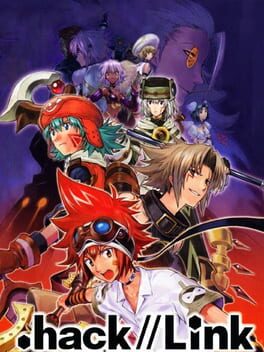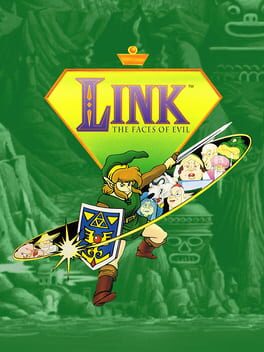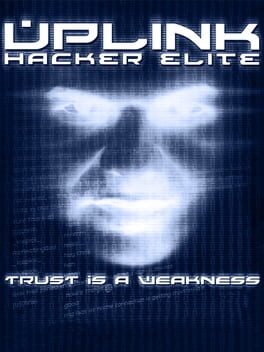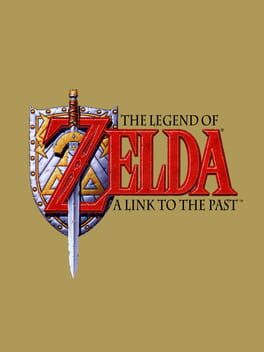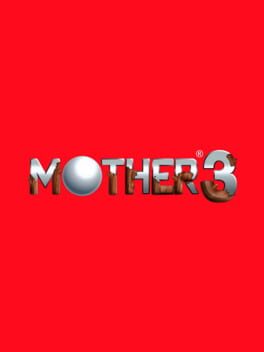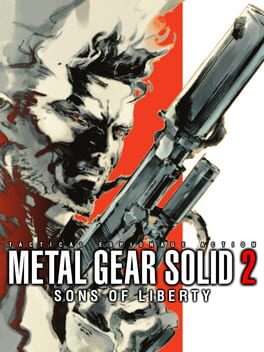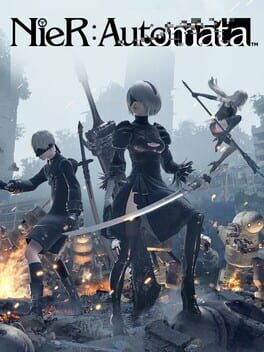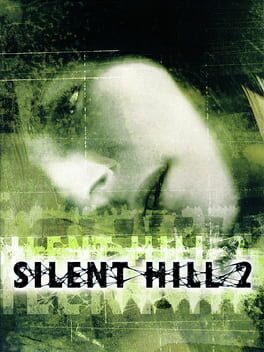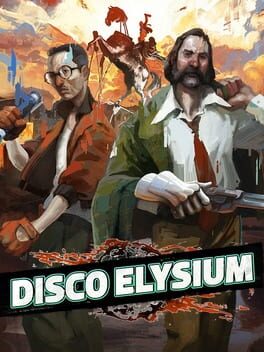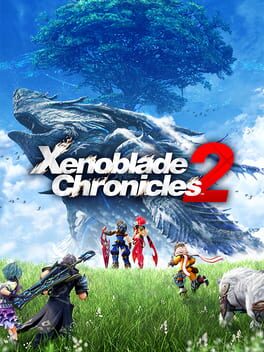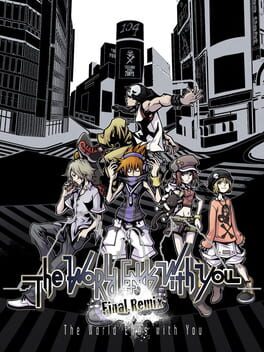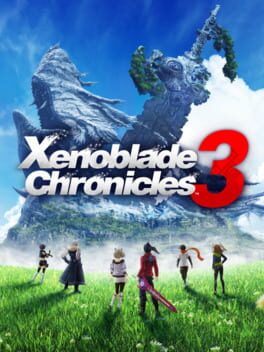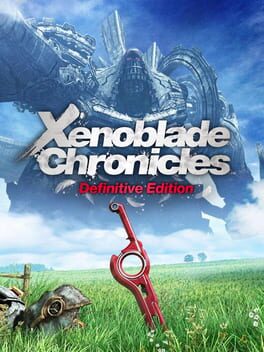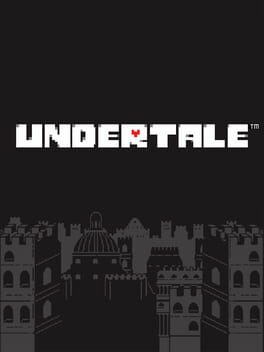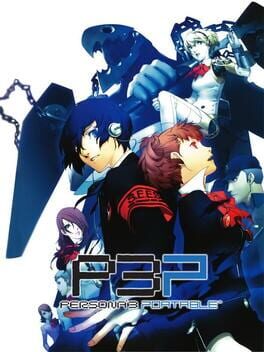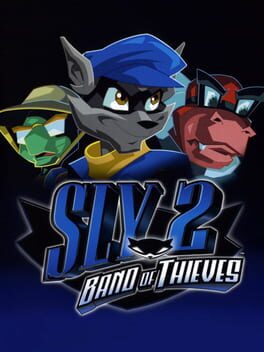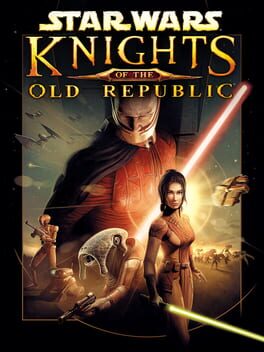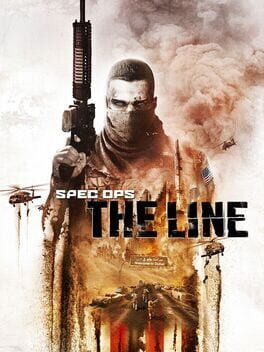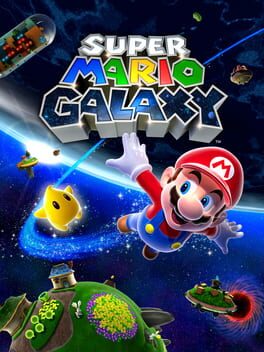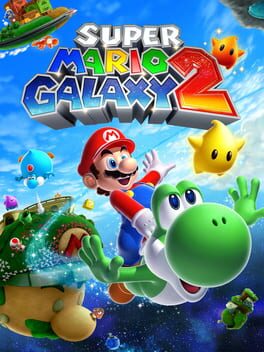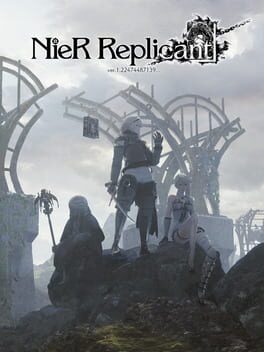MacBlank
153 reviews liked by MacBlank
VVVVVV
2010
VVVVVV has been in my backlog for a long time & finally decided to sit down & play it. I had heard good things throughout the years about the game & for 95% of the experience I'd say it lives up to that hype. The gravity shifting & later introduced mechanics are well executed. The soundtrack is stellar throughout. Its admittedly a moderately difficult game, but checkpoints are well placed enough that it doesn't feel cheap/too stressful.
There's 1 section I don't think it does well though... That being the mandatory escort mission midway through the game. It's a brief section (no longer than like 10 minutes if you make very few errors) but in that I found the CPU movement so inconsistent to control I actually looked up how long the section was & would probably have shelved the game if it had been longer than 15 minutes, but decided to power through realizing it wasn't going to drag much further.
I'm happy I stuck through, because this is a really solid and enjoyable platformer with some great ideas. But definitely would warn people about that section beforehand. Nevertheless, it's still a very strong recommendation for anybody who enjoy platforming games & want to play something challenging - but still feeling fair throughout
There's 1 section I don't think it does well though... That being the mandatory escort mission midway through the game. It's a brief section (no longer than like 10 minutes if you make very few errors) but in that I found the CPU movement so inconsistent to control I actually looked up how long the section was & would probably have shelved the game if it had been longer than 15 minutes, but decided to power through realizing it wasn't going to drag much further.
I'm happy I stuck through, because this is a really solid and enjoyable platformer with some great ideas. But definitely would warn people about that section beforehand. Nevertheless, it's still a very strong recommendation for anybody who enjoy platforming games & want to play something challenging - but still feeling fair throughout
An interesting tidbit to start off with - Sly Cooper & The Thievious Racoonous actually ended up being a game I played way later than its sequels. Which makes for a peculiar experience, considering Sly 1 vs Sly 2 & Sly 3 is a very apples to oranges comparison. You still do a lot of the same things in the sequels (varied missions, sneaking around, collecting different valuables) but it’s in a different avenue because Sly 1 is more straightforward than it’s sequels. Going for a smaller hub in general, not really featuring Bentley/Murray much outside of the odd level once a blue moon, combat being harder, etc.
Fortunately, nobody said that because it’s a different context also must mean it’s inferior & in Sly 1’s case it still stands well on its own. It still has a lot of the Sly charm which the whole series has (the comic book-esque aesthetic & generally memorable characters) & while combat is different to its sequels it’s not a deterrent. Because enemies go down just as quickly as you - hence it makes the challenge not feel insurmountable.
Probably the biggest complaints I’ve seen is that some missions felt gimmicky & while I do see where people are coming from there were only 2 “gimmick” levels which led to personal frustration, being the chicken level & 1 of the bosses. However I felt the games deviation from more standard gameplay more often than not led to an enjoyable experience.
And that’s also how I’d rate this game - mostly enjoyable! It’s a slight outlier compared to its sequels, but it holds up fairly well with quite some years removed since it came out. I’d recommend it to any fan of 3D platformers.
Fortunately, nobody said that because it’s a different context also must mean it’s inferior & in Sly 1’s case it still stands well on its own. It still has a lot of the Sly charm which the whole series has (the comic book-esque aesthetic & generally memorable characters) & while combat is different to its sequels it’s not a deterrent. Because enemies go down just as quickly as you - hence it makes the challenge not feel insurmountable.
Probably the biggest complaints I’ve seen is that some missions felt gimmicky & while I do see where people are coming from there were only 2 “gimmick” levels which led to personal frustration, being the chicken level & 1 of the bosses. However I felt the games deviation from more standard gameplay more often than not led to an enjoyable experience.
And that’s also how I’d rate this game - mostly enjoyable! It’s a slight outlier compared to its sequels, but it holds up fairly well with quite some years removed since it came out. I’d recommend it to any fan of 3D platformers.
In 1996, I was six years old and lived in Florida. Wario Land had been released two years prior-- though I loved Super Mario Land 2 and replayed it regularly on my og/fat Game Boy.. I had no idea this game existed. On a particular weekend, I stayed over at my great grandmother's apartment.
I played MANY games in front of them while they sat in a rocking chair. She always encouraged me and my interest in games. Her favorite thing was seeing Crash Bandicoot die in a myriad of ways-- took pure pleasure in it. A very kind and cool person.
My family has always been deeply religious, unfortunately it came with a severe demonizing of secular media. This was bad for me, to say the least. Despite this, my great grandma would do things like rent Splatterhouse 2 for me. We even had lookout schemes where I would quickly switch to a "friendly" game when she saw another family member arrive to pick me up, or etc.
On this aforementioned weekend in 1996, my great grandmother took me to a Sunday service at a very old-fashioned, musty, southern baptist church. She handed me 5$ and instructed me to tithe it when the donation plate was passed around. I did. After the service, she told me "I'm very proud of you"-- and then took me to Toys "R" Us to pick out a NEW game that I could OWN (rare for me). She was the one that pointed out Wario Land. I vividly remember falling in love with the color scheming on the front cover. I was blown away with this game.
The moral of the story is that money is my god now, and I am now a slime ball rat fuck.
Just kidding. Everything that Wario in is so good. They are often a beautiful design and mechanical antithesis to Nintendo games. I loved my Great Grandmother very much, she never judged me or the things that I liked superficially. Unfortunately I do not still have that copy of Wario Land: Super Mario Land 3.. but her funeral service pamphlet has made its way into various video game collage designs that I've made for my creative outlets (bands, social media design, youtube, etc). Wario rules. Love you, Nanny.
https://imgur.com/UEz3Jbh
I played MANY games in front of them while they sat in a rocking chair. She always encouraged me and my interest in games. Her favorite thing was seeing Crash Bandicoot die in a myriad of ways-- took pure pleasure in it. A very kind and cool person.
My family has always been deeply religious, unfortunately it came with a severe demonizing of secular media. This was bad for me, to say the least. Despite this, my great grandma would do things like rent Splatterhouse 2 for me. We even had lookout schemes where I would quickly switch to a "friendly" game when she saw another family member arrive to pick me up, or etc.
On this aforementioned weekend in 1996, my great grandmother took me to a Sunday service at a very old-fashioned, musty, southern baptist church. She handed me 5$ and instructed me to tithe it when the donation plate was passed around. I did. After the service, she told me "I'm very proud of you"-- and then took me to Toys "R" Us to pick out a NEW game that I could OWN (rare for me). She was the one that pointed out Wario Land. I vividly remember falling in love with the color scheming on the front cover. I was blown away with this game.
The moral of the story is that money is my god now, and I am now a slime ball rat fuck.
Just kidding. Everything that Wario in is so good. They are often a beautiful design and mechanical antithesis to Nintendo games. I loved my Great Grandmother very much, she never judged me or the things that I liked superficially. Unfortunately I do not still have that copy of Wario Land: Super Mario Land 3.. but her funeral service pamphlet has made its way into various video game collage designs that I've made for my creative outlets (bands, social media design, youtube, etc). Wario rules. Love you, Nanny.
https://imgur.com/UEz3Jbh
Blasto
1998
summer 98' i just got my very own, hand me down, psx. my step dad took me to blockbuster to rent a game and basically pleaded with me to rent resident evil 2.
guess what i rented instead.
the alternate reality version of me is probably way cooler and rich but at least i know im getting a big kiss on the lips from phil hartman, in heaven.
guess what i rented instead.
the alternate reality version of me is probably way cooler and rich but at least i know im getting a big kiss on the lips from phil hartman, in heaven.
Ryse: Son of Rome
2013
Well this was a pleasant surprise! Ryse had my interest way back when it was announced for Xbox Kinect of all things. It was heralded as one of the first “real first party title” for the addon & that intrigued me. However I never picked it up when it changed from a Kinect game to a Xbox One launch title… both because it lost some appeal just becoming a standard action/hack & slash game, but more importantly due to Microsoft’s horrific Xbox One launch marketing.
Now roughly a decade later I picked up the game from Steam cheaply &.. It’s a pretty fun time? Admittedly it’s a quite short game (beat it in 6 hours & I’m not a person who breezes through) but it was an enjoyable ride I’d say. It’s still a shockingly gorgeous game despite being like 11-ish years old & the combat is also pretty solid… Which is a relief because going in I had heard it was pretty dull, though it holds up without issue & has enough variation to be interesting + the executions are all quite varied & stylish.
In the context of this as a retail game that originally launched for 60$.... Yeah under those circumstances I’d rate it quite a bit lower, but at a fraction of that nowadays I would give it a recommendation to people who are drawn in by Ryse’s setting or just want to play a solid hack & slash game that doesn’t overstay its welcome.
Now roughly a decade later I picked up the game from Steam cheaply &.. It’s a pretty fun time? Admittedly it’s a quite short game (beat it in 6 hours & I’m not a person who breezes through) but it was an enjoyable ride I’d say. It’s still a shockingly gorgeous game despite being like 11-ish years old & the combat is also pretty solid… Which is a relief because going in I had heard it was pretty dull, though it holds up without issue & has enough variation to be interesting + the executions are all quite varied & stylish.
In the context of this as a retail game that originally launched for 60$.... Yeah under those circumstances I’d rate it quite a bit lower, but at a fraction of that nowadays I would give it a recommendation to people who are drawn in by Ryse’s setting or just want to play a solid hack & slash game that doesn’t overstay its welcome.
I got this remake some time ago because I heard of the reputation of the classic Panzer Dragoon titles, and how they are beloved among a lot of older SEGA fans.
And I am really sorry to say that... I didn't really enjoyed it.
I am pretty sure the original title was a monumental achievement for the time, but I feel this remake doesn't really do it justice.
For a graphical stand point , it got a solid enough upgrade, but that doesn't do really enough to capture the "more whimsical" and fantastical looks of the original, that maybe because of the timeless polygon aesthetic of the SEGA Saturn, is able to look better that its remake (which is kinda ironic and sad)
The gameplay I feel.... wasn't for me. I am already not 100% into traditional Rail Shooters, but the gameplay of this one just was not enjoyable to me: I found it too clunky, unbalanced and too locked on weird camera controls that maeks some sections playable, and other completely hard for no reason (especially when you are looking left or right of the dragon).
I had a great time with some of the levels, for thevariety of setting, enemies and challenges, but others were just... not a great time, some sections especially feels really claustrophoci, presenting the same environment over and over again and enemies that are not appealing and kinda hard to figure out.
The setting is supposed to showcase this super cool apocalyctic world, were covernemnt screw up Earth and all of that... but in the game you just don't have that... all you got is a pre-rendered unskippable long cutscene with legit just awful graphics, a slight hints among the in-battle dialogues, and a possible "rival dragon" that is the villanous enemy you gotta face?
I can't help it to compare it to it's Nintendo "rival series" Star Fox, Sin & Punishment, and even Kid Icarus Uprising: rail shooters that are able to combine and enthrilling gameplay and replayability, with beautiful environments, more profound character interactions, and a writing that makes you want more from the world you visit in the title.
Not to mention that... this is an incredibly short experince. SUrely it is replayable for higher score and possible alternate paths, but I think I finishe the whole adventure in like.... AN HOUR?
I appreciate SEGA for bringing back classic on modern consoles, but I feel this remaster could have done much more... maybe including some extras modes, or even collectibles and concept arts... or maybe could have been bundled with Panzer dragoon 2 or Saga, for a cool bundle of classic.
But on its own, I feel it is not that worth it. Sorry to say, I wish this Dragon will come back under a better light.
And I am really sorry to say that... I didn't really enjoyed it.
I am pretty sure the original title was a monumental achievement for the time, but I feel this remake doesn't really do it justice.
For a graphical stand point , it got a solid enough upgrade, but that doesn't do really enough to capture the "more whimsical" and fantastical looks of the original, that maybe because of the timeless polygon aesthetic of the SEGA Saturn, is able to look better that its remake (which is kinda ironic and sad)
The gameplay I feel.... wasn't for me. I am already not 100% into traditional Rail Shooters, but the gameplay of this one just was not enjoyable to me: I found it too clunky, unbalanced and too locked on weird camera controls that maeks some sections playable, and other completely hard for no reason (especially when you are looking left or right of the dragon).
I had a great time with some of the levels, for thevariety of setting, enemies and challenges, but others were just... not a great time, some sections especially feels really claustrophoci, presenting the same environment over and over again and enemies that are not appealing and kinda hard to figure out.
The setting is supposed to showcase this super cool apocalyctic world, were covernemnt screw up Earth and all of that... but in the game you just don't have that... all you got is a pre-rendered unskippable long cutscene with legit just awful graphics, a slight hints among the in-battle dialogues, and a possible "rival dragon" that is the villanous enemy you gotta face?
I can't help it to compare it to it's Nintendo "rival series" Star Fox, Sin & Punishment, and even Kid Icarus Uprising: rail shooters that are able to combine and enthrilling gameplay and replayability, with beautiful environments, more profound character interactions, and a writing that makes you want more from the world you visit in the title.
Not to mention that... this is an incredibly short experince. SUrely it is replayable for higher score and possible alternate paths, but I think I finishe the whole adventure in like.... AN HOUR?
I appreciate SEGA for bringing back classic on modern consoles, but I feel this remaster could have done much more... maybe including some extras modes, or even collectibles and concept arts... or maybe could have been bundled with Panzer dragoon 2 or Saga, for a cool bundle of classic.
But on its own, I feel it is not that worth it. Sorry to say, I wish this Dragon will come back under a better light.
Pizza Tower
2023
My blood and bones comes from the country shaped like a boot, so this games speaks to my soul on a personal level.
First off, this game is not an accurate representation of Italy as a whole: there is not enough pasta in this game compared to Pizza, and also.... nah that's about it.
But Peppino is the best italian rep in gaming: a man that sruggles with debt and finances, and can easily see its career ended in a seconds thanks to clowns that stands above him, so he screams a lot and turns into an Courage the Cowardly Dog character to stand out....... totally relatable ngl.
Pizza Tower is amazing. The idea of a Wario Land spiritual successor with a, incredible artstyle is already a perfect concept, but they you add incredible level design, an atmosphere that combines cartoony hijinks with striaght up horror, and a speed and adrenaline inducing movement that cna compete with the best Sonic titles.
To this you add a sprinkle os spice, with the incredible bosses and especially the amazingly spicy ending, to create one of the best meals in the Indie-games menu.
Incredible surprise from 2023. Recommended to everyone that loves videogames!
First off, this game is not an accurate representation of Italy as a whole: there is not enough pasta in this game compared to Pizza, and also.... nah that's about it.
But Peppino is the best italian rep in gaming: a man that sruggles with debt and finances, and can easily see its career ended in a seconds thanks to clowns that stands above him, so he screams a lot and turns into an Courage the Cowardly Dog character to stand out....... totally relatable ngl.
Pizza Tower is amazing. The idea of a Wario Land spiritual successor with a, incredible artstyle is already a perfect concept, but they you add incredible level design, an atmosphere that combines cartoony hijinks with striaght up horror, and a speed and adrenaline inducing movement that cna compete with the best Sonic titles.
To this you add a sprinkle os spice, with the incredible bosses and especially the amazingly spicy ending, to create one of the best meals in the Indie-games menu.
Incredible surprise from 2023. Recommended to everyone that loves videogames!
I feel like there are two, sometimes not mutually exclusive experiences with this game: either this was your primary focus for the Pokemon TCG back in the day because the collection aspect dominated the competitive and the combination of the music and incredibly clever spritework to bring these illustrations to the Game Boy Color won your heart forever, or you recoil in agony every time you hear the coin flip sound effect in this game.
This game exists in an incredibly weird space where it wants to show you everything that the initial three sets of the TCG had to show off, but almost entirely ignores the meta to do so. Sure, there's one Rain Dance trainer and Ronald's mid-game deck vaguely resembles Haymaker, but there's a lot of very neat experimentation trying to show off the various playstyles and most of 'em aren't running four Oak four energy removals. Sure, lightning is a bit neutered as the TCG version of Electrode was too complicated to implement in the game, but the game's slow rollout of cards essentially forces you to play a version of the Pokemon TCG that never existed, the intentions of the card game made playable rather than what the meta eventually developed into. And if you avoid fiending for a Hitmonchan Turbo deck or whatever, that's pretty cool! I ended up going through this playthrough with a quick swap strategy themed around Butterfree, keeping a core of Scythers and Grimers to build up my little Caterpies, then having a zero-retreat monster who heals for 20 every turn and can whirlwind away bad match-ups while Muk camps on the bench, with some Tauros and Wigglytuff tossed in as catch-alls and Koffing to inflict status on walls. It was a fun little grab bag that swung between big damage and stall, would have crumbled immediately if the game threw more than a few Electabuzz at me, but was fun to let play out in a much slower-paced metagame!
The game does have the drawbacks of being on the Game Boy. It's rather slow, the enemy AI isn't sophisticated and can pretty easily be caught into patterns (they rarely think about the big picture of bench composition compared to finding the fastest way to kill whatever's in front of them now), and sometimes Chansey will succeed at Scrunch eight times in a row and kill five minutes. The onboarding process is... about as good as they could do for the time with a tutorial that explains the game well enough, but actual deck construction tips, like suggested energy/pokemon balance, come WAY after they should be useful. The game remains a fascinating relic of the TCG in a state where it never really existed, and is far more competent at celebrating its strengths than contemporaries like Yu-Gi-Oh Dark Duel Stories or even later GBA Yugiohs were doing for years. It's mostly a cute game that's just kinda fun at doin' what it wants. Nothin' wrong with that!
This game exists in an incredibly weird space where it wants to show you everything that the initial three sets of the TCG had to show off, but almost entirely ignores the meta to do so. Sure, there's one Rain Dance trainer and Ronald's mid-game deck vaguely resembles Haymaker, but there's a lot of very neat experimentation trying to show off the various playstyles and most of 'em aren't running four Oak four energy removals. Sure, lightning is a bit neutered as the TCG version of Electrode was too complicated to implement in the game, but the game's slow rollout of cards essentially forces you to play a version of the Pokemon TCG that never existed, the intentions of the card game made playable rather than what the meta eventually developed into. And if you avoid fiending for a Hitmonchan Turbo deck or whatever, that's pretty cool! I ended up going through this playthrough with a quick swap strategy themed around Butterfree, keeping a core of Scythers and Grimers to build up my little Caterpies, then having a zero-retreat monster who heals for 20 every turn and can whirlwind away bad match-ups while Muk camps on the bench, with some Tauros and Wigglytuff tossed in as catch-alls and Koffing to inflict status on walls. It was a fun little grab bag that swung between big damage and stall, would have crumbled immediately if the game threw more than a few Electabuzz at me, but was fun to let play out in a much slower-paced metagame!
The game does have the drawbacks of being on the Game Boy. It's rather slow, the enemy AI isn't sophisticated and can pretty easily be caught into patterns (they rarely think about the big picture of bench composition compared to finding the fastest way to kill whatever's in front of them now), and sometimes Chansey will succeed at Scrunch eight times in a row and kill five minutes. The onboarding process is... about as good as they could do for the time with a tutorial that explains the game well enough, but actual deck construction tips, like suggested energy/pokemon balance, come WAY after they should be useful. The game remains a fascinating relic of the TCG in a state where it never really existed, and is far more competent at celebrating its strengths than contemporaries like Yu-Gi-Oh Dark Duel Stories or even later GBA Yugiohs were doing for years. It's mostly a cute game that's just kinda fun at doin' what it wants. Nothin' wrong with that!
Golden Axe
1989
Childhood is choosing the Amazon and beating the first level with two continues. Adulthood is picking the Dwarf and throwing minions into bottomless pits (without supervisors). A railguard wouldn't have hurt here and there, but I can excuse Golden Axe and its sandal-and-sword Conanesque environment for not following OSHA guidelines. Apparently you can't call yourself Death Adder if you let your minions have dental and sick days.
Golden Axe is short but rich in content and mechanics: picking a different hero fundamentally changes the way you play the game, with the tougher and more resilient axe wielding previously mentioned Dwarf, the more magically inclined (derogatory) Amazon and the Barbarian stuck, like Malcom, in the middle.
Kind of the devs putting a beginner course through this version! Too bad it's a completely different matter once you approach the 8 stages long arcade with a plethora of enemies, hazardous environment (as said before, not fun falling in a pit) and those small imps jumping around. It's an hard game, by design, meant to drain you of your coins: every time you'll be cornered by enemies you'll see half or more of your health drained and there's nothing you can do, enemies don't stand in line ready to be smacked but if you're not careful you'll be the one being thrown around. It can be frustrating, especially at the start, because the hit-stun you receive is egregious, but once you memorize patterns and strategically nuke the screens with magic, you'll see through the end of it. A tip: don't bother with the skeletons at the very end, they have more health than the boss itself. This game is not fair.
But, is it worth it? I think it is, especially considering what comes after takes a lot of inspiration from Golden Axe and Double Dragon, but if you want to play, say, Dungeons & Dragons: Chronicles of Mystara, I'd skip to that. It simply hasn't aged as gracefully as others, but if you're here for an history lesson there's no harm in it.
Golden Axe is short but rich in content and mechanics: picking a different hero fundamentally changes the way you play the game, with the tougher and more resilient axe wielding previously mentioned Dwarf, the more magically inclined (derogatory) Amazon and the Barbarian stuck, like Malcom, in the middle.
Kind of the devs putting a beginner course through this version! Too bad it's a completely different matter once you approach the 8 stages long arcade with a plethora of enemies, hazardous environment (as said before, not fun falling in a pit) and those small imps jumping around. It's an hard game, by design, meant to drain you of your coins: every time you'll be cornered by enemies you'll see half or more of your health drained and there's nothing you can do, enemies don't stand in line ready to be smacked but if you're not careful you'll be the one being thrown around. It can be frustrating, especially at the start, because the hit-stun you receive is egregious, but once you memorize patterns and strategically nuke the screens with magic, you'll see through the end of it. A tip: don't bother with the skeletons at the very end, they have more health than the boss itself. This game is not fair.
But, is it worth it? I think it is, especially considering what comes after takes a lot of inspiration from Golden Axe and Double Dragon, but if you want to play, say, Dungeons & Dragons: Chronicles of Mystara, I'd skip to that. It simply hasn't aged as gracefully as others, but if you're here for an history lesson there's no harm in it.
Blast Corps
1997
I used to see my cousins play this game a lot as a kid, but it looked fairly generic to me. All I remember is it had some funny sound effects for some reason.
Years later I find that this was made by Rare, so I wanted to give it a shot considering their reputation on the N64.
Blast Corps is a 'turn your brain off and wreck shit' kinda game. You're given levels each with a time limit to complete the objective, the objective mostly being wreck all the required shit before time runs out. The variety comes in the type of vehicles you are given each mission. Sometimes you are given a bulldozer and other times you are given a giant mech amongst other things. Something it will switch up and you will need to use multiple vehicles in a sigle level.
The gameplay is satisfying and easy to pick up. But once you've completed the first couple of levels, you've basically seen everything the game has to offer and the rest of the game provides similar challenges, just much harder. If you wanna complete this game you will be retrying a lot of the later levels over and over again.
Blast Corps is a fine time waster if you wanna just crumble the fuck outta some 1990 lookin-ass buildings with some big machinery, but once your fun runs out the game does not have much else to offer.
Years later I find that this was made by Rare, so I wanted to give it a shot considering their reputation on the N64.
Blast Corps is a 'turn your brain off and wreck shit' kinda game. You're given levels each with a time limit to complete the objective, the objective mostly being wreck all the required shit before time runs out. The variety comes in the type of vehicles you are given each mission. Sometimes you are given a bulldozer and other times you are given a giant mech amongst other things. Something it will switch up and you will need to use multiple vehicles in a sigle level.
The gameplay is satisfying and easy to pick up. But once you've completed the first couple of levels, you've basically seen everything the game has to offer and the rest of the game provides similar challenges, just much harder. If you wanna complete this game you will be retrying a lot of the later levels over and over again.
Blast Corps is a fine time waster if you wanna just crumble the fuck outta some 1990 lookin-ass buildings with some big machinery, but once your fun runs out the game does not have much else to offer.
